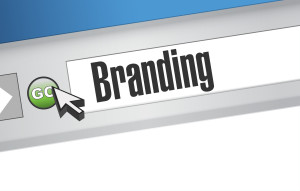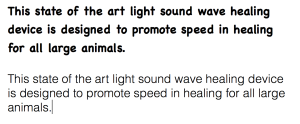 If I asked you to draw the McDonald’s logo, you could probably come pretty close, right? Of course! Their logo has become a pop and business culture icon – seemingly ingrained in our minds through years and years of well planned advertising. However, the famous golden arches are only a small part of the multi-billion dollar fast-food giant’s brand marketing.
If I asked you to draw the McDonald’s logo, you could probably come pretty close, right? Of course! Their logo has become a pop and business culture icon – seemingly ingrained in our minds through years and years of well planned advertising. However, the famous golden arches are only a small part of the multi-billion dollar fast-food giant’s brand marketing.
To some, a company’s brand simply means their logo. Granted, a logo is a recognizable visual representation of a company to the consumer. All businesses hope their logos become as familiar in their industries as McDonald’s is in theirs. However, in e-commerce and e-business, there are other often overlooked factors contributing to a company’s web presence, market awareness, and brand loyalty; beyond the logo design.
Let’s look at four website branding elements many web based companies are unaware of and how they can affect your traffic, customer retention, and ultimately your online revenue.
Taglines
If you were asked to match the following taglines to a brand, most could do so without much thought, even in the absence of accompanying logos or fonts.
Think Different.
Just Do It.
The Ultimate Driving Machine ®
Taglines, like these examples, are an effective way to sum up your company and what you offer the consumer in a few words or a single phrase. Your tagline should communicate not only how you want to be perceived, but also how you want your visitors to feel when they discover and interact with your website. In other words, your tagline sets the tone for the entire conversation between business and consumer.
So what do our three tagline examples communicate?
It might be part of the reason Apple loyalists are so passionate about the brand is because they have bought into the rebel persona. (yours truly, guilty as charged) They WANT to be a little different and they are willing to pay more for that perception.
On some level, Nike customers may believe that in buying their products, they will be absorbed into the culture of successful athletes and healthy lifestyle choices. Internal motivation backed by peer pressure is a strong influencer.
Even when a new BMW owner sees the total of their first maintenance or repair bill, the sticker shock is likely lessened because they feel like they are behind the wheel of something truly special. Why? BMW told them so.
Taglines can be highly effective in creating a specific brand perception. Take the time to produce one that best communicates with your target consumer, but remember to be consistent throughout your conversation.
Personality and Tone
Often a common mistake in e-business branding, companies can’t make up their mind on what their personality will be. A brand is, in essence, similar to a person with whom the consumer has a real and personal relationship. In the same way we ascribe character traits to our friends, family, work colleagues, and public personalities, a brand personality embodies human traits that form a tangible bond between the consumer and company. The tone with which you communicate through your website should match what you are selling.
For example, if your website sells and promotes party supplies but the general tone of your page content is staunch and serious, your consumer will probably experience what we call brand confusion. They won’t feel a connection to your company’s brand personality and what you have to offer. In the sometimes impersonal world of e-commerce, it’s all about establishing a connection and keeping your customers loyal to your online brand.
Color Palette
Many larger companies spend millions of dollars researching the colors in their branding and the neuroscience and psychology behind their influence. Measured by advanced brain imaging equipment, it has been scientifically proven that some colors elicit a direct response in the deepest parts of our psyche. For example, shades of red can induce hunger or communicate power. (Think about the grocery store aisle and politician neckties). Blues can be calming and signify integrity. Yellow is known to invoke happiness. So, how does color psychology translate to revenue?
A few years ago, I had an opportunity to meet with the user interface design team at Zappos.com, one of the largest online footwear and apparel retailers. In a consumer behavior study performed on their product pages, it was discovered that simply changing the color of the Add to Cart button, cart conversion increased by approximately 13%. When you consider Zappos’ multi-millions in annual revenue, 13% is a significant number, especially when attributed to a small color change in their call to action buttons.
Font Styles
The font you use for your website copy seems like an insignificant consideration. There are several reasons why it makes sense to take a second look, one of them being consumer perception. Take a look at the two sentences below describing veterinary medical equipment.

Although both fonts are popular in the graphic design world, obviously the second one better matches the nature of this particular content. Font size, shape, hue, and orientation can set the tone for what your visitors will take away from what they are reading. However, there is a more important consideration for font and how it can impact search engine traffic.
There is regularly updated list of a couple hundred “browser safe fonts”. These fonts are considered “searchable” and can be easily crawled by search engines like Google, Bing, and Yahoo! Use of a font not found on the list can result in the search engine spiders skipping over your content altogether. Lower rankings means lower traffic ultimately resulting in lower sales.
There’s a reason why many successful companies hire branding experts (like us) to help strengthen their connection with consumers. You’ve read our suggestions for defining the branding elements on your website, now ask yourself if your own e-brand is consistent across the board. If not, you’ll probably want to get your website visitors and your company on the same page (pun intended).

